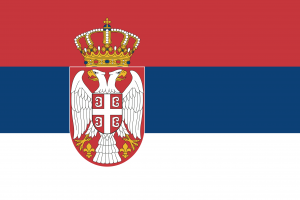Language/Serbian/Grammar/How-to-Use-Be
Hi Serbian learners! 😊
In this lesson, we will go over the basics of using the verb "be" in Serbian. We'll cover the present tense of "be," how to use it to describe people and things, and more. By the end of this lesson, you'll be well on your way to mastering this important verb. So, let's get started!
The Present Tense of "Be"
In Serbian, the verb "be" can be translated as "biti." Here are the forms of "biti" in the present tense:
| Serbian | Pronunciation | English |
|---|---|---|
| sam | /sâm/ | am |
| si | /si/ | are |
| je | /ye/ | is |
| smo | /smô/ | are (plural) |
| ste | /stê/ | are (plural) |
| su | /su/ | are (plural) |
Note that the forms of "biti" are irregular, which means they don't follow a regular pattern.
Here's an example dialogue to see the verb "be" in context:
- Person 1: Kako si? (/kâko si?/) (How are you?)
- Person 2: Ja sam dobro. (/yâ sam dôbro/) (I am good.)
As you can see, the present tense of "be" is used to talk about states of being.
Describing People and Things with "Be"
In Serbian, we use "be" to describe people and things. For example:
| Serbian | Pronunciation | English |
|---|---|---|
| Ona je visoka. | /ôna ye vîsôka/ | She is tall. |
| On je student. | /ôn ye student/ | He is a student. |
| Ovo je knjiga. | /ôvo ye knjiga/ | This is a book. |
| Ovo su moji prijatelji. | /ôvo su môyi priyâtelyi/ | These are my friends. |
You can also use "biti" to describe feelings, emotions, and health:
| Serbian | Pronunciation | English |
|---|---|---|
| Hladno mi je. | /hlâdno mi ye/ | I am cold. |
| Teško mi je. | /têshko mi ye/ | I am having a hard time. |
| Srećan sam. | /srećân sam/ | I am happy. |
| Bolesna je. | /bolesnâ ye/ | She is sick. |
Here's another example dialogue:
- Person 1: Kako izgleda tvoj novi stan? (/kâko îzglêda tvôy novi stân?/) (What does your new apartment look like?)
- Person 2: Lep je i prostran. (/lep ye i próstran/) (It's beautiful and spacious.)
As you can see, we use "be" to both describe things and people and to talk about emotions and states of being.
Negation with "Be"
In Serbian, we can negate statements using "ne" in front of the verb "biti." For example:
| Serbian | Pronunciation | English |
|---|---|---|
| Ja nisam umoran. | /yâ nisâm umôran/ | I am not tired. |
| Ovo nije tvoj novi auto. | /ôvo nije tvôy novi auto/ | This is not your new car. |
| Oni nisu ovde. | /ôni nisu ôvde/ | They are not here. |
Here's another useful dialogue:
- Person 1: Da li si gladan? (/dâ li si glâdan/) (Are you hungry?)
- Person 2: Ne, nisam. Hvala. (/ne, nisâm. hvala/) (No, I'm not. Thanks.)
Questions with "Be"
To ask questions in Serbian using "be," we simply switch the word order of the subject and the verb. Here are some examples:
| Serbian | Pronunciation | English |
|---|---|---|
| Da li si ti student? | /dâ li si ti student/ | Are you a student? |
| Ko si ti? | /kô si ti/ | Who are you? |
| Gde ste vi sada? | /gdê ste vi sâdâ/ | Where are you now? |
Here's another example of a dialogue:
- Person 1: Jesi li videla film "The Matrix"? (/yesi li vidêla film "The Matrix"?/) (Have you seen the movie "The Matrix"?)
- Person 2: Jesam. Sviđa mi se. (/yesâm. svîdya mi se/) (Yes, I have. I liked it.)
Summary
In this lesson, we've learned about the verb "be" in Serbian. We discussed the present tense of "be," how to use it to describe people and things, negation with "be," and how to form questions. Remember to practice using these grammar points in context by speaking with native speakers on Polyglot Club.
➡ If you have any questions, please ask them in the comments section below.
➡ Feel free to edit this wiki page if you think it can be improved. 😎

